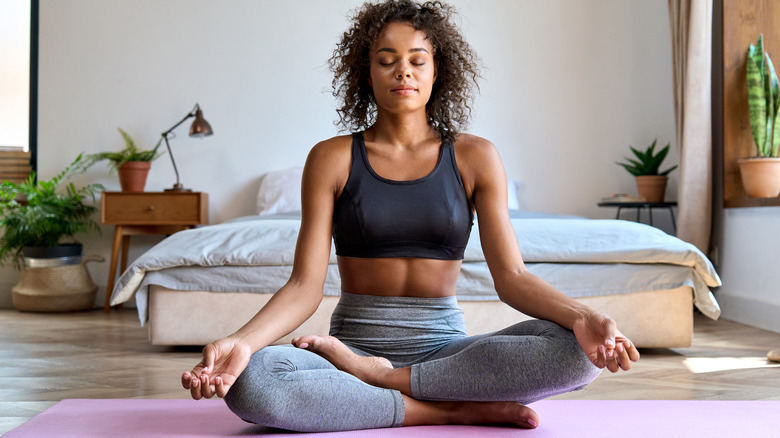What Is The Most Common Type Of Dream?
Dreams are a reflection of our own subconscious, and they put the strangest, most mysterious corners of our minds on full display behind our eyelids every night. Yes — every night. Even though we certainly don't remember all of them, people actually dream four to six times each night on average.
We tend to dream the most during the REM (rapid eye movement) phase of sleep because that's the time of the night when our brains are most active. Per Puffy, the REM phase is the fifth stage of sleep, and it follows the drowsy stage, the light sleep stage, the moderate sleep stage, and the deep sleep stage. If you sleep for eight hours, you probably dream for about 100 minutes of the night — about the length of a feature film.
Dreaming is a completely normal part of everyday existence, but all the details of dreams and how they work aren't common knowledge. There's a lot to know about the different types of dreams, which are the most common, and how we can even exert some control over their nature.
The most common type of dreaming
The five primary types of dreams are normal dreams, daydreams, false awakening dreams, lucid dreams, and nightmares. Normal dreams are the most common type, and they generally feature experiences and people we know. During normal dreams, we're entirely unaware that we're dreaming, and we often forget these ones when we wake up. No matter how whacky the dream may seem to you when you're awake and recalling it, you don't question the reality of the dream while you're dreaming it.
When you do remember a normal dream, it can serve as a window into your subconscious. There may be a fear, memory, experience, or person that's having a bigger impact on you than you previously realized. However, it can take some reflection to really understand what the dream meant since they appear in coded imagery. For example, a dream about drowning may indicate that you're currently dealing with overwhelming circumstances or unmanageable emotions.
How you can positively influence your dreams
Fortunately, there are a variety of techniques you can employ to help your dreaming become — and remain — a safe and happy place. The best thing you can do for your sleep and dreams is to create a calming and consistent bedtime routine. If you're able to, it's especially helpful to go to bed at the same time every night and to avoid blue light from screens (even though it's tempting to scroll through your phone in bed sometimes.) Avoiding horror movies and violent TV shows is also a good practice if you're looking to avoid nightmares in particular.
Meditation, journaling, listening to ASMR, and reading a book are all relaxing and productive bedtime routines that will guide you toward a positive sleeping experience. Activities like these help you unwind and prioritize peaceful thoughts over anxious ones before you drift off into sleep. Of course, it's not easy to successfully implement a routine overnight. Start by just trying to stick to the same bedtime, and add on what feels right for you from there.


